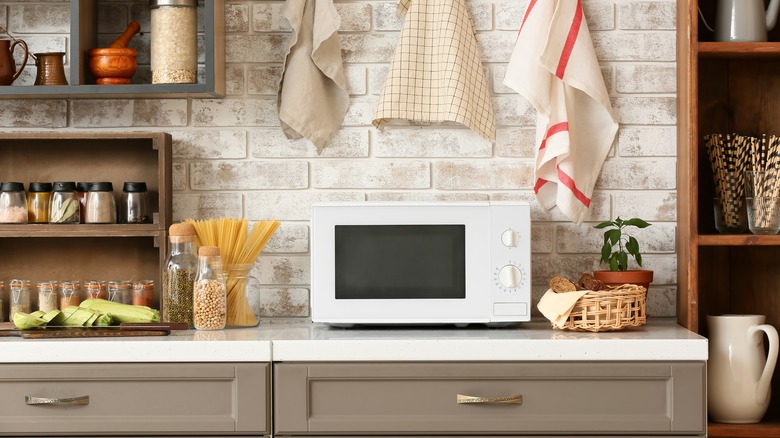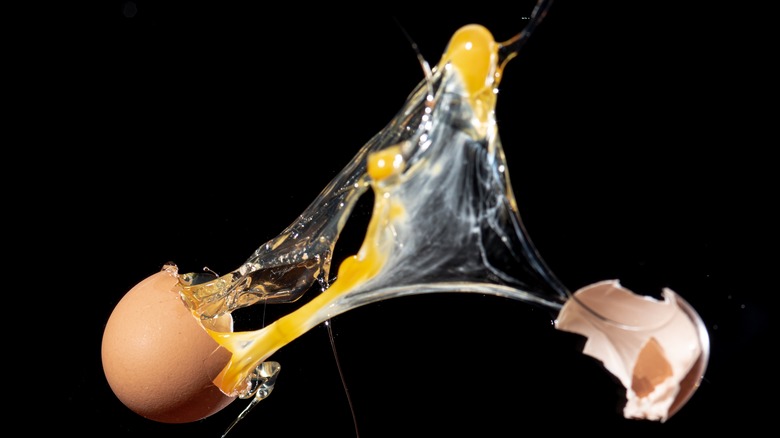The Accidental Origin Of The Microwave
While there are plenty of things you shouldn't do with a microwave, like defrosting meat, or especially microwaving grapes, the modern invention is admittedly one the most efficient means of preparing meals. From a quick microwaved baked potato to melting chocolate and brilliantly reheating steamed buns, the microwave is a miracle-worker.
The microwave oven is also the kitchen appliance that keeps on giving. According to Microwave Cooking for One, there are countless crafts that can be accomplished using the microwave. Flower-drying, dough-making, and even papiér mâché are made easier using the microwave. Meanwhile, The Resourceful Mama can give tips on conducting a science experiment using just your microwave and some Peeps.
According to a Food Network post, a microwave is the No. 1 essential for college kids. From reheating meals to making coffee, tea, and pre-packaged frozen products, the microwave is the total tool that students at school need for preparing food. However, as think tank the Adam Smith Institute (ASI) suggests, microwaves also make life more manageable for everyone. ASI highlights the fact that when less time is leant to tedious tasks, more time can be given to other aspects of life.
So who is the mastermind behind the mighty microwave that has made life better, and how did its humble start turn into the interior turntable that makes dinnertime manageable?
The microwave's inventor made the connection
According to the New England Historical Society (NEHS), Percy Spencer was one of the earliest hires (in 1925) at the company that would eventually become Raytheon. With only a fifth-grade education, he eventually became the inventor of the microwave while working to produce magnetrons for the military. According to NEHS, Spencer had a traumatized background (his father died when he was barely a toddler and he was sent to live with his aunt and uncle) and a short-lived stint in school, yet excelled at Raytheon, particularly in magnetron production, transforming the process from machining to more efficient stamping and soldering.
Spencer became an indispensable member of the team who purposefully developed a number of important contributions to the company, per Popular Mechanics. However, his discovery of the microwave was a bit of a (happy) accident. As the magazine details, on a particular day in 1946, while Spencer was attempting to improve the magnetrons, he realized that the peanut cluster he often kept in his pocket had melted while in close proximity to the magnetrons.
Microwaves went from accident to theory to essential
Stunned by his mysteriously melted peanut cluster, Percy Spencer decided to test the theory that the magnetrons were responsible for his soggy snack. His next experiments included popping popcorn and exposing an egg to the waves. According to Popular Mechanics, the latter's results were a (what would now be expected) microwave-induced mess. However, Spencer's experiments proved his postulation to be true and the magnetron quickly became the basis for the modern-day microwave.
While initial models of the microwave in the '40s and '50s were cumbersome and expensive, by the late '60s, modern microwaves began to be somewhat more commonplace. By the middle of the '70s, microwaves were selling by the millions annually (via Good Housekeeping). According to the U.S. Bureau of Labor Statistics, by 2001 at least 90% of households had a microwave.
Now, microwaves are a go-to for nearly everything from snacks to full meals and are essentials in both homes and workplaces. However, while nearly everything now seems microwaveable, it might still be ideal to take a second to decide about making something like a 25-pound Thanksgiving turkey in the microwave a reality or a prank.


